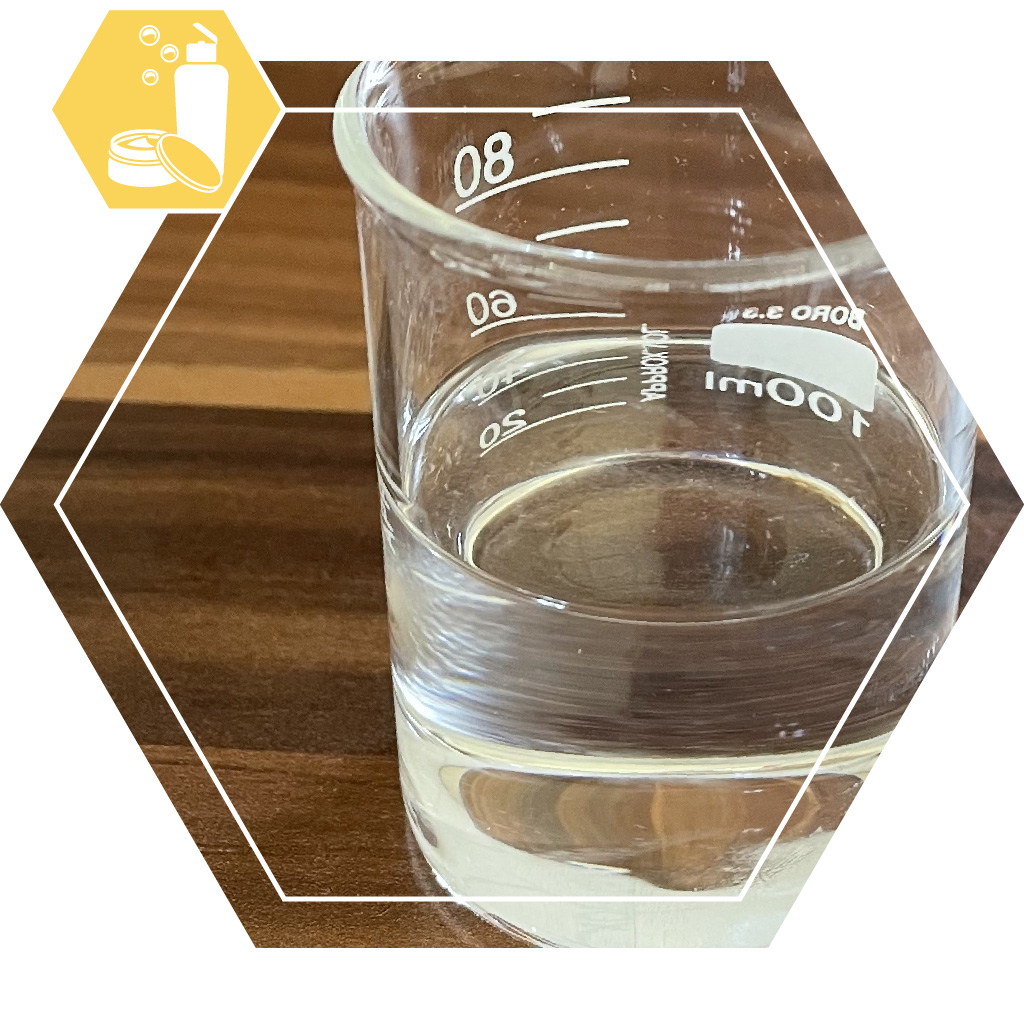Cosmetics raw material
Description
This text has been automatically translated and may contain errors.
This product will be discontinued: sale as long as stock lasts.
Propylene glycol is a solvent and humectant for use in cosmetics.
Use
As a solvent, it is used to partially or completely replace water in cosmetics. This increases the viscosity of the product ('more viscous'), which can help with dosing. Some substances dissolve better in propylene glycol than in water, which can improve the clarity of a product.
As a humectant ('humectant') it limits dehydration of the product, for example of a cream. To a certain extent, this also applies to the product applied to the skin: if the rest of the formula is also well thought out, propylene glycol can limit dehydration of the skin.
An additional advantage is that propylene glycol, because it attracts water, lowers the so-called 'water activity' of the product, reducing the risk of spoilage by micro-organisms. If the concentration of propylene glycol is higher than about 20%, the chance of spoilage is almost zero.
Dosage: as a humectant usually around 3%, as a solvent rarely more than 10%. In principle, a higher dose can do little harm, but the product will become more sticky, which is usually not the intention. A very high dose (> 20%) could theoretically draw water out of the skin and is therefore not recommended.
Non cosmetics applications
In addition to use in cosmetics, there are also various 'technical' applications, for example to replace water in whole or in part in darkroom recipes, so that mold growth has less chance.
De Hekserij does not sell products intended for use in foodstuffs or for other internal use. This product is NOT an exception. We strongly advise against using this product in aroma mixtures for electric smoking: we have no idea whether the quality we sell is suitable for this.
Properties
Propylene glycol, also known as 1,2-propanediol PG or MPG, is a colorless, transparent viscous ('syrupy') liquid at room temperature.
Sustainability
Propylene glycol is made from glycerine and hydrogen. Both can be mined more or less sustainably. The glycerine is in any case not made from animal fats and in any case partly from palm oil and/or palm kernel oil. It breaks down easily in the water, less easily in the soil. It is not toxic to most plants, animals or other organisms.
Packaging
The 100 ml, 250 ml and 1000 ml packages are brown plastic (PET) bottles with a black plastic (PP) cap. The 5 kg pack is a translucent plastic (HDPE) jerry can with a black plastic (PP) cap.
Dangers
Propylene glycol is not classified as a hazardous substance. We also recommend that you handle all substances with care: keep out of the reach of children.
Codes
Item number: 10633
English Name: Propylene Glycol
EC number: 200-338-0
CAS Number EU: 57-55-6
INCI: PROPYLENE GLYCOL




